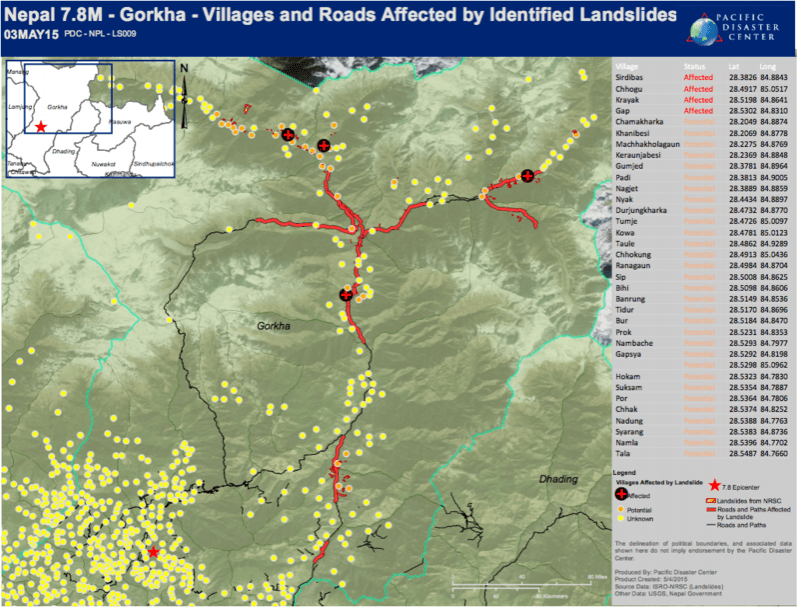The situation in Nepal, resulting from the M7.8 earthquake, is changing rapidly as response plays out on the ground. According to the latest UN OCHA Situation Report, 7,365 people have been reported dead and 14,355 injured. Additionally, ten days after the earthquake and its major aftershocks, over 3 million people are estimated to be in need of food assistance.
The Government of Nepal, watching the rapidly evolving situation in the affected areas, has formally requested that international search and rescue (SAR) teams begin their demobilization and exit plans. There has been a shift in operations, and primary attention must now be focused on the humanitarian relief goods and personnel continuing to arrive in the country. Coordination at Kathmandu airport is becoming more streamlined, and the distribution of critically needed supplies is being scaled up. Field level aid operations are also establishing humanitarian hubs to coordinate the flow of relief at district and ward levels.
Medical and health services remain severely strained and in need of support from foreign medical teams, as well as surgical equipment and supplies. The Government has deployed Rapid Response Teams for the prevention and control of potential disease outbreaks. However, the specialized health care services available at this time are insufficient—including mental health and psychosocial support services. A number of Child Friendly Spaces (CFS) for displaced communities have been established to offer psychosocial support and key lifesaving messages related to WASH (Water, Sanitation, and Hygiene), Nutrition, Health, and Child Protection.
Security and protection for internally displaced people (IDP) and aid is a concern, including in many areas that remain inaccessible by road. With the next monsoon season forecast to begin in about six weeks, and the number of damaged/destroyed houses in the hundreds of thousands, there is a significant need to address the logistical challenges of delivering adequate and appropriate shelter and food assistance to camps and remote areas.
Pacific Disaster Center (PDC) remains actively involved with responding agencies, in order to provide value-added products that support real-world situational awareness (SA). SA products can be access through the PDC website—or if you are an emergency manager and would like access to PDC’s DisasterAWARE platform through EMOPS, please apply for an account at emops.pdc.org.
Click here to learn more about earthquake preparedness.
Learn more:
• Find PDC products about the 7.8M earthquake,
• Read about a 2014 Disaster Response Exercise in Nepal, or
• Visit ReliefWeb for additional sources and links.
Additional PDC news regarding the 7.8M earthquake in Nepal:
• Emergency Communications Systems Improve as Response Operations Broaden
• Relief to Severely Impacted Remote Villages Hampered by Inaccessibility, Adverse Weather Conditions
• Preparedness Efforts Help Support Response in Nepal
• Initial Damage and Needs Assessment in Nepal
• Food Security Concerns in Nepal Grow as Demands Exceed In-Country Supply
• Health Care Resources Stretched Beyond Capacity by Earthquake Injuries
• Data Access for Supporting Response and Recovery in Nepal
• Critical Data on Infrastructure in Nepal as Death Toll Rises
• 7.8M Earthquake Strikes Nepal, Followed by Aftershocks

